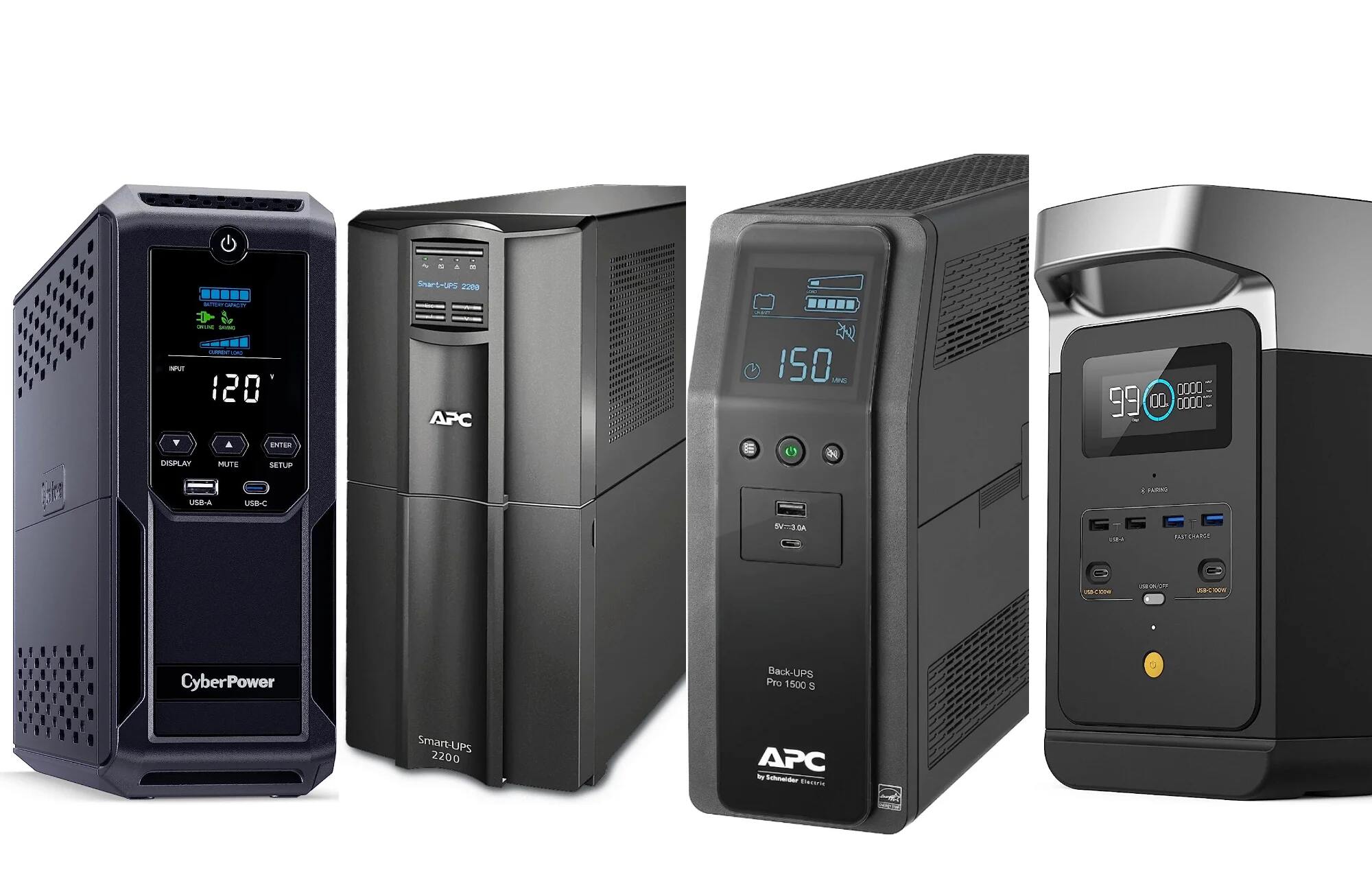Signs of a Dead UPS Battery
A UPS (Uninterruptible Power Supply) is a critical component for safeguarding electronic devices from power surges, outages, and fluctuations. However, like any other battery, the UPS battery has a finite lifespan and can eventually fail. Recognizing the signs of a failing or dead UPS battery is crucial for preventing unexpected power interruptions and protecting your equipment.
Here are some key indicators that your UPS battery may be dead or approaching the end of its life:
-
Frequent Power Outages: If your UPS is unable to sustain power during brief outages, it could be a sign of a deteriorating battery. A fully functional UPS should seamlessly switch to battery power without disrupting the connected devices.
-
Audible Alarms: Most UPS units are equipped with audible alarms to alert users of potential issues, including a failing battery. If you hear continuous beeping or unusual alarm patterns, it's essential to investigate the cause, as it could indicate a dead UPS battery.
-
Inadequate Runtime: As a UPS battery nears the end of its lifespan, its ability to provide extended runtime diminishes. If you notice a significant reduction in the UPS's backup runtime, it's a strong indication that the battery requires attention.
-
Visible Damage or Corrosion: Physical inspection of the UPS battery is crucial in identifying visible signs of damage or corrosion. Swollen or bulging battery casings, leakage, or corrosion around the terminals are clear indications of a failing battery.
-
Age of the Battery: The age of the UPS battery is a significant factor in determining its reliability. Most UPS batteries have a lifespan of 3-5 years, after which they are prone to failure. If your UPS battery is approaching or has exceeded this timeframe, it's advisable to assess its condition.
-
Unresponsive UPS: A dead UPS battery may result in the unit becoming unresponsive or failing to power on altogether. If your UPS fails to initiate or exhibits erratic behavior, the battery could be the root cause.
Recognizing these signs is crucial for preemptively addressing UPS battery issues and ensuring the continuous protection of your electronic equipment. By promptly identifying a failing UPS battery, you can take proactive measures to replace it and maintain the uninterrupted power supply for your devices.
Testing Methods for UPS Battery
Regular testing of a UPS (Uninterruptible Power Supply) battery is essential for verifying its operational integrity and identifying potential issues before they escalate. By employing appropriate testing methods, you can assess the condition of the UPS battery and ensure its reliability in safeguarding connected devices.
Here are several effective testing methods for UPS batteries:
-
Load Testing: Conducting a load test involves simulating a power outage scenario to evaluate the UPS battery’s ability to sustain connected devices. This method provides a comprehensive assessment of the battery’s performance under real-world conditions and helps determine its actual runtime capacity.
-
Voltage Testing: Utilizing a multimeter or voltmeter, voltage testing enables the measurement of the UPS battery’s voltage output. By comparing the recorded voltage with the manufacturer’s specifications, you can ascertain the battery’s health and detect any deviations that may indicate deterioration or impending failure.
-
Internal Resistance Testing: Measuring the internal resistance of a UPS battery provides valuable insights into its overall condition. Elevated internal resistance levels can signify degradation or damage, prompting the need for further diagnostic assessments or battery replacement.
-
Visual Inspection: A visual inspection of the UPS battery encompasses scrutinizing its physical attributes, including the terminals, casing, and overall cleanliness. Any signs of leakage, corrosion, bulging, or other abnormalities warrant immediate attention and may necessitate advanced testing or battery replacement.
-
Remote Monitoring: Implementing remote monitoring solutions allows for continuous surveillance of UPS battery parameters, such as temperature, voltage, and load status. This proactive approach enables early detection of irregularities or anomalies, facilitating timely intervention to address potential battery issues.
Employing these testing methods at regular intervals empowers users to proactively manage the health and performance of their UPS batteries. By integrating comprehensive testing into maintenance routines, you can mitigate the risk of unexpected battery failures and uphold the reliability of your UPS in preserving uninterrupted power for critical equipment.
Common Causes of UPS Battery Failure
Understanding the common causes of UPS (Uninterruptible Power Supply) battery failure is pivotal in implementing proactive measures to mitigate potential risks and ensure the sustained functionality of critical electronic equipment. By identifying the underlying factors that contribute to UPS battery failure, users can adopt preventive strategies to uphold the reliability of their power backup systems.
Several prevalent causes of UPS battery failure include:
-
Aging: The natural aging process is a primary factor influencing UPS battery performance and longevity. Over time, chemical reactions within the battery cells lead to diminished capacity and increased internal resistance, ultimately compromising the battery’s ability to deliver sustained power during outages.
-
Overcharging or Undercharging: Inadequate charging practices, such as prolonged overcharging or insufficient charging, can detrimentally impact the health and lifespan of UPS batteries. These charging irregularities contribute to accelerated degradation, reduced capacity, and premature failure of the battery cells.
-
High Operating Temperatures: Exposure to elevated temperatures, whether due to environmental factors or inadequate ventilation, can significantly impair the performance and longevity of UPS batteries. Excessive heat accelerates chemical reactions within the battery, hastening degradation and diminishing overall reliability.
-
Improper Maintenance: Neglecting routine maintenance, such as neglecting to perform regular capacity tests, visual inspections, and cleaning, can lead to undetected issues that culminate in UPS battery failure. Proactive maintenance practices are essential for identifying and addressing potential concerns before they compromise the battery’s functionality.
-
Environmental Factors: Environmental conditions, including exposure to moisture, dust, and corrosive elements, can detrimentally impact the integrity of UPS batteries. These factors contribute to accelerated corrosion, compromised electrical connections, and reduced insulation, ultimately leading to premature battery failure.
-
Manufacturing Defects: Inherent defects or substandard manufacturing processes can result in UPS batteries with compromised structural integrity or electrical performance. Identifying and addressing potential manufacturing defects is crucial in preventing premature failure and ensuring the reliability of the UPS battery.
By recognizing and addressing these common causes of UPS battery failure, users can implement proactive measures to safeguard their critical equipment and maintain uninterrupted power protection. Through diligent monitoring, appropriate maintenance, and adherence to best practices, the risk of UPS battery failure can be significantly mitigated, ensuring the continued functionality of essential electronic devices.
Tips for Maintaining UPS Battery Life
Proactively maintaining the health and longevity of UPS (Uninterruptible Power Supply) batteries is essential for preserving their reliability in safeguarding critical electronic equipment. By adhering to best practices and implementing effective maintenance strategies, users can optimize the performance and extend the lifespan of their UPS batteries, ensuring uninterrupted power protection.
Here are valuable tips for maintaining UPS battery life:
-
Regular Capacity Testing: Conduct routine capacity tests to assess the UPS battery’s ability to deliver the expected runtime and power output. Regular testing helps identify potential degradation and allows for timely intervention to address diminishing performance.
-
Temperature Control: Maintain an optimal operating temperature for the UPS and its battery to mitigate the adverse effects of heat on battery performance. Adequate ventilation and environmental temperature control contribute to prolonged battery lifespan and sustained reliability.
-
Proper Charging Practices: Adhere to manufacturer-recommended charging practices to avoid overcharging or undercharging the UPS battery. Following prescribed charging parameters helps preserve battery health and prevents premature degradation.
-
Regular Inspections: Perform visual inspections of the UPS battery, checking for signs of corrosion, leakage, or physical damage. Promptly address any anomalies to prevent potential issues from escalating and compromising battery integrity.
-
Correct Placement: Ensure the UPS and its battery are positioned in a suitable environment, free from excessive dust, moisture, and corrosive elements. Proper placement contributes to sustained battery performance and minimizes environmental stressors.
-
Proactive Maintenance: Implement a proactive maintenance schedule, encompassing comprehensive battery inspections, cleaning, and adherence to recommended service intervals. Diligent maintenance practices help preemptively address potential issues and sustain battery reliability.
-
Remote Monitoring: Utilize remote monitoring solutions to continuously track UPS battery parameters, enabling early detection of abnormalities and proactive intervention to mitigate potential failures.
By integrating these tips into a comprehensive maintenance regimen, users can effectively prolong the lifespan and optimize the performance of their UPS batteries. Proactive maintenance not only ensures the uninterrupted functionality of critical electronic equipment but also mitigates the risk of unexpected battery failures, bolstering the reliability of the power backup system.

























